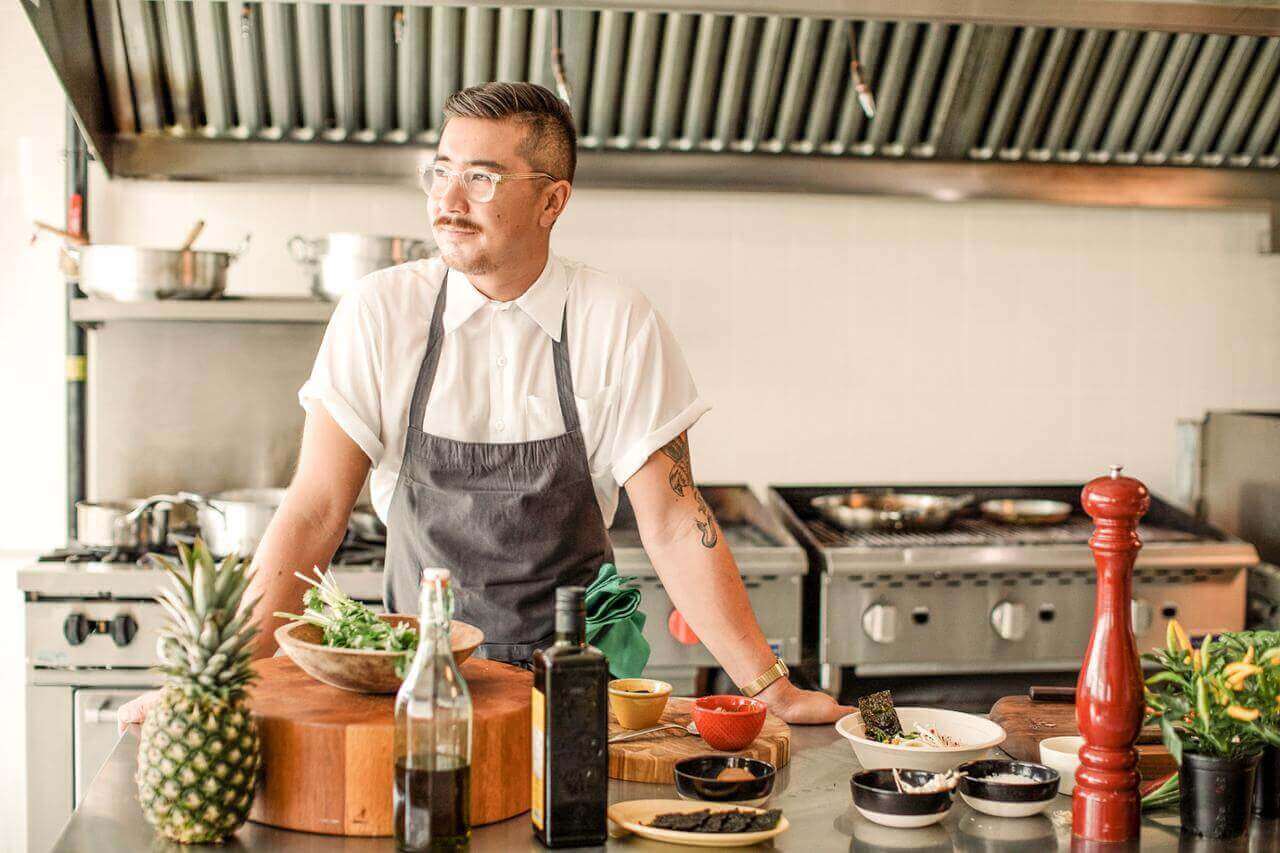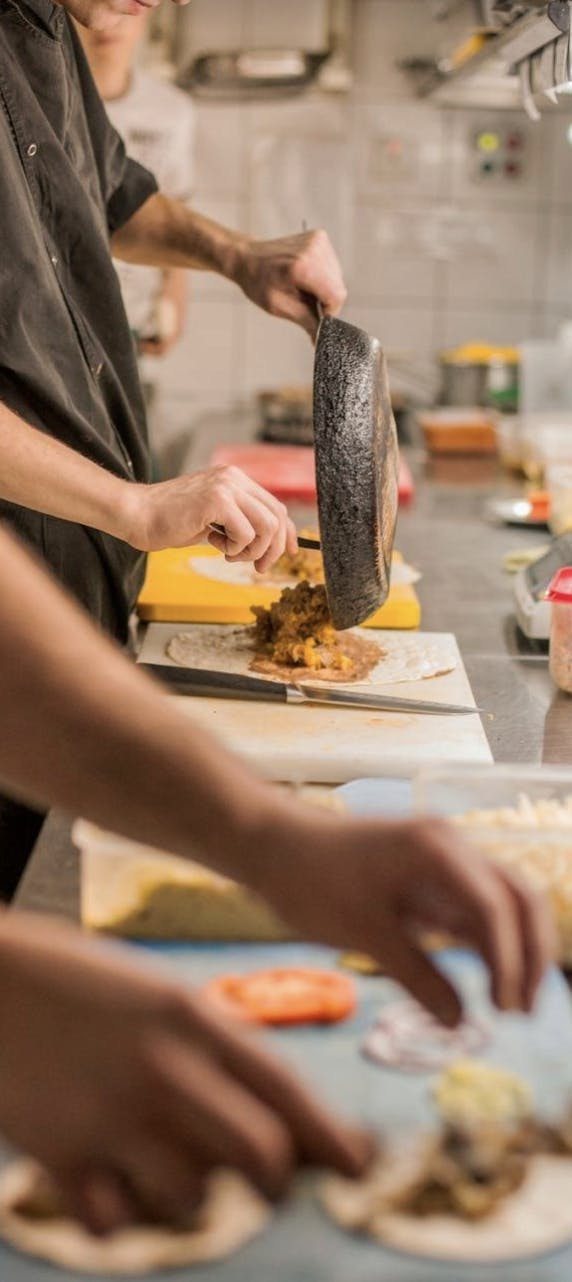Ghost Kitchen Profit Margin: What to Know
Table of Contents
CloudKitchens
How many tacos can be delivered from a 1000sqft restaurant?
The same amount as a 200sqft ghost kitchen.

In response to the rapid changes in society and technology, restaurateurs are beginning to defy long-standing business practices and embrace a newer business model that can streamline operations and drive profits.
We’re talking about ghost kitchens — commercial kitchens designed specifically for delivery that help restaurateurs expand into new neighborhoods and grow their businesses at a fraction of the cost (Read more about the meaning of ghost kitchens).
But how much do ghost kitchens make? Today, this guide will cover ghost kitchen profit margins.
Restaurant profit margins
Before we dive into the specifics of starting a ghost kitchen, it’s essential to define our terms. After all, what is the profit margin for a restaurant?
This is the dollars made as a percentage of a restaurant’s annual sales. It’s the money remaining after you’ve subtracted operating expenses from total revenue. This could include a range of expenses, including:
- Labor
- Inventory
- Payroll
- Rent
- Utilities
- Credit card processing fees
- POS system technology
- Equipment repairs
- Marketing and advertising
- Maintenance
- Taxes
Additionally, there could be dozens of other fixed costs, variable costs, and above-the-line expenses that eat away at profits.
But when considering profit margins, it’s important to distinguish between gross profit and net profit. Here’s how you can calculate both of those figures:
Gross profit margin
Your gross profits are what you have remaining after deducting the Cost of Goods Sold (CoGS) mentioned above. This is a good measurement of a restaurant’s overall efficiency but doesn’t factor in all potential costs. The formula is:
- Selling price – CoGS / Selling price = Gross profit
- Gross profit x 100 = Gross profit margin
So, for instance, if you sold a meal for $20 and it cost you $5, your gross profit margin would look as follows:
| $20 – $5 = $15 $15 / $20 = 0.75 0.75 x 100 = 75% gross profit margin |
Net profit margin
This figure gives a more accurate reading of the total success and profitability of a restaurant because calculating the net profit margin means you have deduced all of your costs of running the business from the gross profit. The formula is:
- Total Revenue – Total Expenses = Net Profit
- (Net profit/revenue) x 100 = Net Profit Margin
Using this formula, if your revenue last month was $150,000 and your total expenses were $95,000, the formula would look as follows:
| $150,000 – $95,000 = $55,000 $55,000/$150,000 = 0.366 0.366 x 100 = 36.66% net profit margin |
How can you improve restaurant profit margins?
By leveraging these profit margin formulas, it becomes clear that there are only three primary ways that a restaurant can drive profit margins:
- Increasing sales volume
- Decreasing costs
- Changing prices
Of these, the first two are likely the only feasible long-term solutions.
Why?
Well, if you’re an established, existing restaurant, you’ve likely already been forced to raise prices to account for historic inflation levels. And even then, there’s often an inverse relationship between prices and sales volume. By increasing prices, you’d likely experience a decrease in sales volume as a result.
This is why ghost kitchens could be game-changers, potentially increasing profit margins via increased sales volume and decreased costs.
How ghost kitchens can drive profitability
So, how can ghost kitchens help you accomplish these feats?
Lower overhead costs
With ghost kitchens, you can lower costs and still maintain quality. This drives cost reductions in several notable ways, including:
- Fewer input costs: Since the commercial kitchen is designed for delivery service optimization, it doesn’t require some of the equipment a brick-and-mortar location might require. Whether it’s tables, furniture, tableware, or signage and decor…fewer inputs mean lower costs.
- Lower rent: By operating a ghost kitchen, there’s no need for a dining room, lobby, etc. This enables you to run your commercial kitchen out of a smaller location or in multiple cities. For example, you can have a ghost kitchen in Austin and a ghost kitchen in Philadelphia…even if you are located in Los Angeles!
Smaller staff – Labor is often one of a restaurant’s largest costs. For a traditional restaurant, you’d need to hire enough managers, servers, bartenders, hostesses, food and drink runners, cooks, and dishwashers to operate on a full-time basis. With a ghost kitchen, you can eliminate front-of-house labor costs. It only requires between two and four back-of-house staff and all support and fulfillment staff are provided by the ghost kitchen.
Less risk, faster reward
The vast majority of new restaurants fail before they ever turn a profit. 60% of restaurants don’t make it past year one. 80% are out of business by year five. And those few survivors that are actually able to enjoy profits, typically don’t do so until their existing restaurant has been running for 3–5 years.
Put simply, opening a traditional restaurant is an extremely risky proposition because the input costs are so high, the competition in the restaurant industry is so fierce, and the profit margins are so low.
But with a ghost kitchen, you reduce your barrier to entry which makes it cheaper to operate. Instead of a hefty startup cost, you can get going for much less than a traditional restaurant. Additionally, there are fewer factors to drive down profit margins. The ghost kitchen business model helps reduce your overall risk profile and speed up your timeline toward potential profitability. According to the Conversation:
Some small food operators used ghost kitchens to get a foothold in the market during a time when opening a standard restaurant with a dining room would have been unthinkable. As long as the high fees charged by the major delivery services could be mitigated or built into the price, food delivery outfits working out ghost kitchens could find a way to make a living.
Quicker startup
Opening up a new location can be a lengthy and expensive endeavor, taking months if not years to complete. Just consider some of the most basic requirements:
- Finding a suitable property located in an ideal area
- Securing financing for the restaurant
- Applying for the location
- Finding a suitable property located in an ideal area
- Securing financing for the restaurant
- Applying for the location
- Furnishing the kitchen
- Acquiring licenses and permits needed to open a restaurant
- Hiring a head chef and creating a menu (for new restaurants)
- Hiring employees
- Marketing for the opening day
With a ghost kitchen, you eliminate many of the hassles, reducing the time it takes to become operational. Move-in-ready facilities make it possible to launch in as little as ~six weeks.
Streamlined operations across all fronts
Serving in-house diners and making sure that food delivery orders are prepped and ready for pickup adds a further layer of complexity in the planning and management of brick-and-mortar restaurants. It can create a negative impact on staffing, training, and back-of-house operational flow.
Ideally, your kitchen staff should be focused on serving either in-house diners or delivery orders, but not both.
By following a ghost kitchen business model, it provides a space that is optimized just for delivery. It comes equipped with the POS system you require to take orders, track fulfillment, and improve delivery times. It streamlines all to-go orders, across all of the delivery apps, into a singular centralized place. Additionally, a dedicated onsite fulfillment team makes sure that orders are complete and ready for the delivery driver to pick up.
All in all, this allows your ghost kitchen staff to focus on one thing—cooking high-quality meals. And it enables your brick-and-mortar location to direct more of their attention to providing a memorable experience for diners. This results in a better culinary experience for everyone who interacts with your restaurant.
Future proof
Online ordering is the way of the future. And COVID has accelerated a change that was already occurring. Modern restaurants must embrace it or miss out on a significant potential revenue source. Per a National Restaurant Association study:
Sixty-six percent of adults said they ordered takeout or delivery for dinner last week. This was up from 58% during the last week of February. The proportion of adults using takeout or delivery for dinner trended higher after the first few weeks of the initial lockdowns, before plateauing in the mid-60% range in early May.
Off-premise and online ordering are not only increasing by volume in one age demographic but rather across all age demographics. Older generations are increasingly adapting to takeout and delivery. And for many younger consumers, it’s the only world they have ever known.
Ghost kitchens enable restaurants to focus on catering to this demand and help ensure that the food will get out quicker and that it will be fresher when it arrives.
Strategies for a profitable ghost kitchen?
So, what must you do to make sure that your ghost kitchen is successful?
- Hire a qualified head chef
- Plan a simplified menu
- Hone in on your target market
- Craft a narrative that will help you market and advertise
- Find a ghost kitchen
On that final point, CloudKitchens can help you reimagine what a delivery-focused restaurant looks like. We’ll help you open a delivery-optimized kitchen at the heart of delivery demand while also handling the logistics and fulfillment, and taking care of the facility management.
It’s the secret ingredient to growing your business.
We have shared kitchen locations all over the US, so if you’re in Texas and need a commercial kitchen in Austin or live in California and need a commercial kitchen in Los Angeles, we’ve got you covered! We are ready to improve your efficiency to empower your food business journey.
Read More:
- Sales vs Business Development: Which One to Pursue for Ghost Kitchens?
- How Much Does It Cost to Start a Ghost Kitchen: A Complete Guide
- 5 Different Types of Ghost Kitchens | CloudKitchens
- Ghost Kitchen vs. Virtual Kitchen: What’s the Difference?
Interested? Take a tour today.
Explore ghost kitchen locations across the US:
- Ghost kitchens in San Francisco
- Ghost kitchens in LA
- Ghost kitchens in NYC
- Ghost Kitchens in Toronto
- Ghost Kitchens in Atlanta
- Ghost Kitchens in Dallas
- Ghost Kitchens in Chicago
- Ghost Kitchens in Denver
- Ghost Kitchens in Miami
| DISCLAIMER: This information is provided for general informational purposes only and the content does not constitute an endorsement. CloudKitchens does not warrant the accuracy or completeness of any information, text, images/graphics, links, or other content contained within the blog content. We recommend that you consult with financial, legal, and business professionals for advice specific to your situation. |
Sources:
California Health Line. Bay Area Cities Go to War Over Gas Stoves in Homes and Restaurants. https://californiahealthline.org/news/article/bay-area-cities-go-to-war-over-gas-stoves-in-homes-and-restaurants/
FDA. Retail & Food Service HACCP. https://www.fda.gov/food/hazard-analysis-critical-control-point-haccp/retail-food-service-haccp
The Conversation. What’s a ghost kitchen? A food industry expert explains. https://theconversation.com/whats-a-ghost-kitchen-a-food-industry-expert-explains-163151
National Restaurant Association. Consumers are expected to continue using takeout and delivery. https://restaurant.org/education-and-resources/resource-library/consumers-are-expected-to-continue-using-takeout-and-delivery/
More insights & stories
There’s more where that came from.
Get in the know and check out our additional insights



